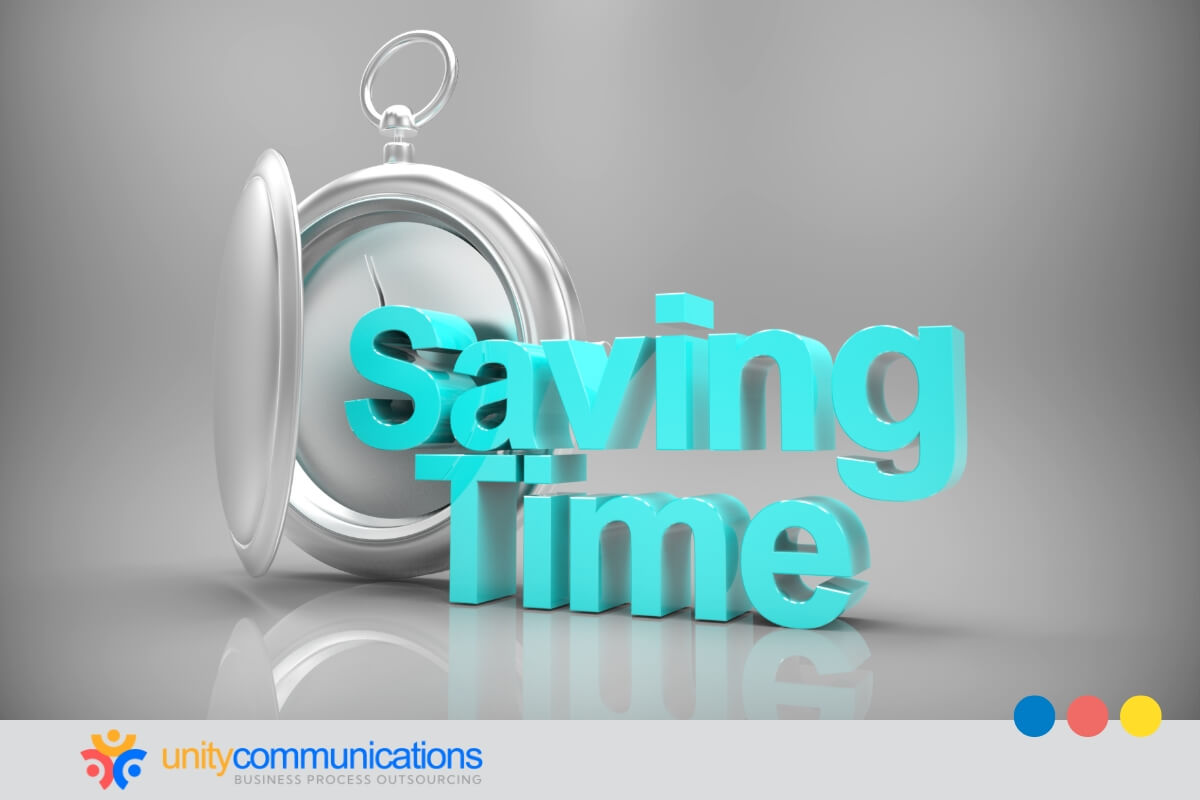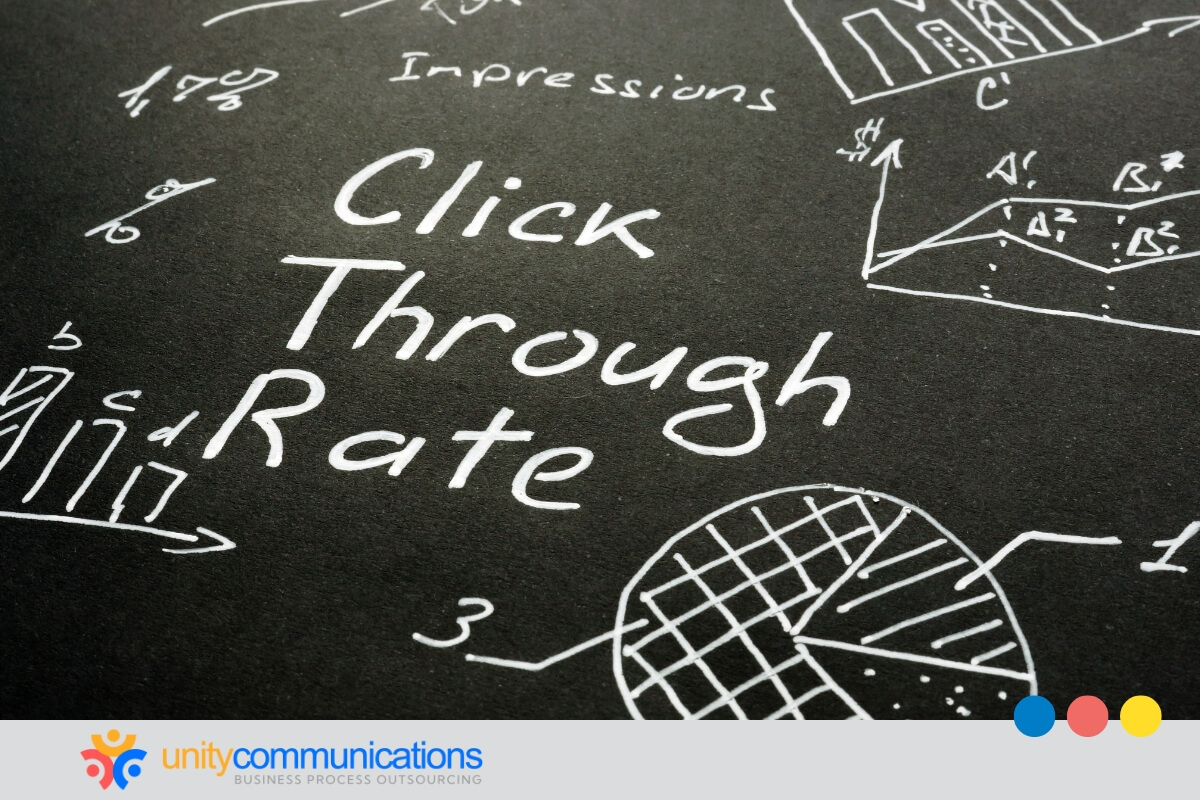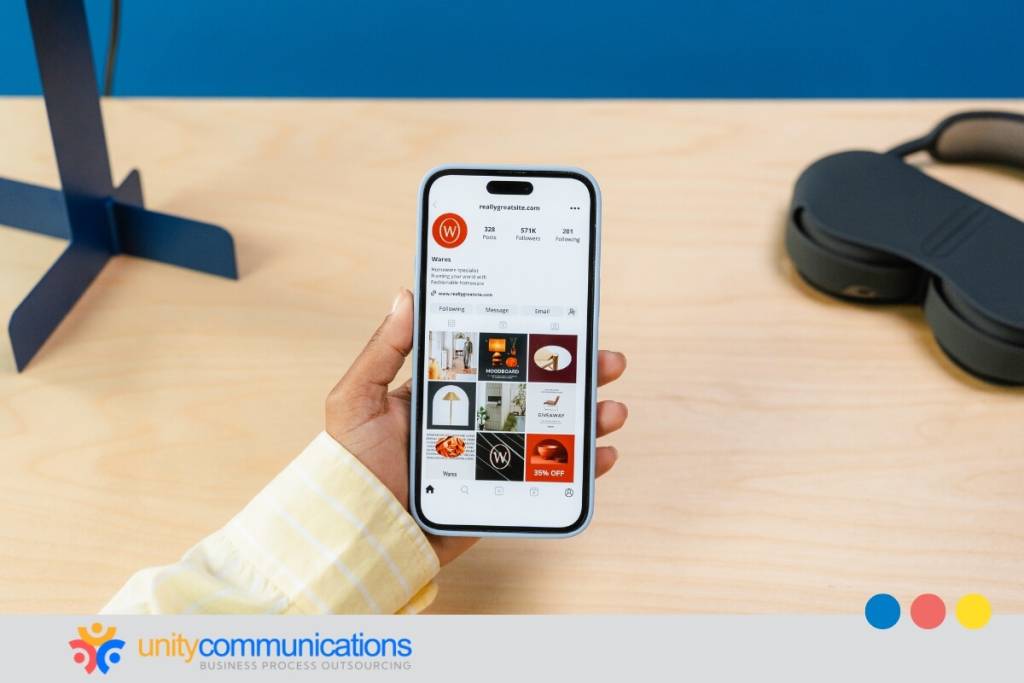Table of Contents
Social media is a powerful marketing tool for raising brand awareness and driving conversions, but its effectiveness comes down to timing. Posting randomly can lead to missed opportunities and inconsistent engagement, weakening your visibility and impact over time.
This guide will teach you the best way to schedule social media posts to stay organized, save time, and maximize your reach. It also spotlights the benefits of partnering with social media marketing services to streamline workflows and stay consistently visible to your audience.
Why social media scheduling is essential for business growth

Smart businesses don’t post randomly. As of February 2025, 5.56 billion people were internet users. Of this total, 5.24 billion people use social media. With such a massive audience, staying active on social platforms is essential to attract leads, convert customers, broaden market reach, and nurture relationships.
However, social media marketing demands consistent visibility, which can be time-consuming and overwhelming for small businesses that must manage multiple tasks daily. Strategic scheduling solves this challenge by delivering six key benefits:
- Save time. Batch content creation and schedule in advance to free up your day.
- Stay consistent. Keep your brand top-of-mind with a steady posting rhythm.
- Boost engagement. Post when your audience is most active to increase likes, shares, and comments.
- Lower stress. Eliminate daily guesswork with a pre-planned calendar.
- Improve strategy. Take a high-level view of content to align with promotions and goals.
- Project professionalism. A clean, consistent feed reinforces trust and brand authority.
While straightforward, scheduling requires strategic planning, audience analysis, and consistent monitoring. As your business grows, consider partnering with a business process outsourcing (BPO) company for expert management that maintains precision and brand consistency. Understanding how outsourcing works can help streamline your efforts, save time, and maintain a solid online presence.
Step-by-step: Build an effective social media posting schedule
A well-planned social media posting schedule keeps your content consistent, your audience engaged, and your brand present. It helps with social ad campaigns, avoids last-minute scrambling, and aligns posts with your broader marketing goals. Follow this proven 10-step process:
- Define clear goals. Identify what success looks like for your social media or influencer marketing efforts, whether growing your followers, driving traffic to your website, increasing sales, or boosting engagement. Clear goals guide your content direction and help you measure what matters.
- Know your audience. Understand who you speak to by knowing their interests, online habits, pain points, and preferred content formats. Use insights from platform analytics or audience research tools to discover when they are most active and what content resonates most.
- Choose strategic platforms. YouTube and Facebook are the most popular online platforms, with half of U.S. adults using Instagram. Smaller numbers turn to TikTok, LinkedIn, X, and Snapchat. Focus on the platforms that align with your audience and business goals.
- Determine optimal posting frequency. Determine a realistic and consistent posting rhythm for each platform. Posting too often can feel spammy, while publishing little can diminish your visibility. Balance consistency with value.
- Plan content mix. Combine different types of content to keep your audience engaged. Examples include educational tips, behind-the-scenes glimpses, product highlights, user-generated content, and interactive polls or questions.
- Create visual content calendars. Use a visual calendar to map out your posts weekly or monthly. This helps you stay organized, spot content gaps, plan around key dates, and maintain a consistent tone and brand message.
- Schedule posts in advance. Use social media scheduling tools to automate publishing so your posts go live at optimal times.
- Monitor key performance metrics. Track key metrics such as reach, engagement rate, click-throughs, shares, and comments. These insights reveal what content is hitting the mark and what needs refinement.
- Adjust and optimize. Use the data to tweak your schedule, test new posting times, experiment with content formats, or refine your messaging. A great schedule evolves with your audience and improves over time.
- Consider outsourcing support. Working with a BPO partner can help manage scheduling, content creation, and community engagement at scale as your content needs grow. This frees up your internal team to focus on strategy and big-picture planning.
Platform-specific tips for scheduling social media posts
With people spending an average of 2 hours and 20 minutes on social media daily, you can engage a massive audience. While scheduling posts is ideal, the process can be tricky. Each platform has its own audience, features, and posting norms.
Understanding these differences ensures your content matches the channel’s audience at the right time. Here are some best practices for scheduling posts across today’s most popular sites:
- Content focus. Choose a mix of long-form content, videos, and engagement-driven posts (polls, questions, or user-generated content).
- Frequency. Post frequently, but not too often. Once or twice a day is optimal.
- Best times. Post during peak hours (late mornings and early afternoons) when your audience is most likely active.
- Pro tip. Use Facebook’s scheduling tools to plan your content so posting happens during the ideal engagement window.
- Content focus. Use Instagram Stories and Reels for increased engagement and align posts with trending hashtags.
- Frequency. Post three to seven times weekly to maintain consistent visibility in your followers’ feeds.
- Best times. Post in the late mornings or evenings, but test with your audience data to determine whether this is ideal for you.
- Pro tip. Use high-quality images, stories, and videos for discoverability.
X (formerly Twitter)
- Content focus. Leverage trending hashtags and engage directly with your audience through replies and retweets to boost visibility.
- Frequency. Aim for more frequent posts (three to five times a day).
- Best times. Post during peak hours, typically early mornings or during lunch breaks, and space your posts throughout the day for maximum reach.
- Pro tip. Use X’s scheduling tools or third-party apps to stagger posts at different times for continuous engagement.
- Content focus. It requires a more professional tone, so focus on thought leadership, industry news, and valuable insights.
- Frequency. Post two to three times weekly to keep your presence consistent without overwhelming your audience.
- Best times. The best times for posting are typically mornings (between 7 and 9 a.m.) and mid-afternoon, especially on weekdays.
- Pro tip. Tailor your content to professionals in your industry and use LinkedIn’s native scheduling tools or third-party tools to plan.
TikTok
- Content focus. Upload engaging, creative, and authentic content.
- Frequency. Posting one to three times daily is ideal for staying visible and maintaining momentum, especially for influencer marketing.
- Best times. Post when users are most active, such as late afternoons and evenings.
- Pro tip. Use TikTok’s native scheduling feature to post consistently, but monitor trending challenges and sounds for maximum engagement.
- Content focus. Aim for high-quality, pinnable content (infographics, guides, and product pins).
- Frequency. Pin five to ten times daily for optimal reach, especially during evening and weekend hours.
- Best times. Post around specific themes or seasonal trends as Pinterest users plan for future events and purchases.
- Pro tip. Use scheduling tools to maintain a consistent presence and optimize pins with rich keywords and engaging descriptions.
Tailoring your scheduling strategy to each platform’s strengths and audience behavior can maximize the effectiveness of your social media presence across the board.
How to analyze and optimize social media performance

Besides scheduling posts, tracking and evaluating post performance is necessary to determine whether your social media efforts are paying off. It can also generate insights to refine your content strategy and better inform business decisions. Key metrics to track:
Engagement rate
Monitor likes, shares, comments, and clicks to gauge how well your audience responds to your content.
Reach and impressions
Check how many people saw your posts and whether your content spreads beyond your immediate followers.
Click-through rate (CTR)
Calculate how many users clicked on your links, which helps measure the effectiveness of your call-to-action and content relevance.
Audience growth
Keep an eye on how your follower count increases after posting. A steady rise indicates that your content is attracting new people.
Conversion rates
If you want to drive traffic or sales, check the number of visitors who completed the desired action (e.g., signing up, purchasing) after clicking your post.
Post timing and frequency
Identify which times and days yield the best engagement and adjust your posting schedule accordingly.
Content performance comparison
See how videos, images, or text-based posts perform and determine which format resonates best with your audience.
Platform-specific insights
Leverage built-in analytics for detailed breakdowns of your post performance.
Regularly reviewing these metrics can optimize your posting tactics and create content that consistently resonates with your audience.
Integrate social media scheduling with your marketing strategy
Ninety percent of consumers use social media to stay updated on trends and cultural events, making it a powerful tool for brands to tap into. Integrating it into your overall marketing strategy amplifies this benefit. You can stay connected with your audience and reach your goals more effectively while boosting brand consistency. Strategic integration tactics:
Align content with marketing campaigns
Schedule posts around product launches, sales events, or seasonal promotions to create a seamless experience across all marketing channels.
Maintain consistent messaging
Ensure your social media posts reflect the same tone, messaging, and visuals as your email campaigns, advertisements, and website content.
Use social media to support other channels
Drive traffic from social media to your blog, email newsletters, or landing pages to reinforce your marketing funnels and increase conversions.
Monitor performance across channels
Track how your social media efforts affect other marketing aspects, such as website traffic or lead generation, to determine whether your social strategy supports your objectives.
Consider BPO support for integration
Outsourcing social media marketing can help align social media execution with broader marketing initiatives. They facilitate message consistency, timely coordination, and efficient campaign scaling without overloading your internal team.
5 critical Social Media scheduling mistakes to Avoid

Despite the benefits of scheduling posts, many businesses make mistakes that can hurt engagement or lead to inconsistent messaging across platforms. Maximize social media efforts by being mindful of these common pitfalls:
- Posting too infrequently. Skipping days or weeks without posting can cause your audience to forget about your brand and reduce engagement.
- Over-scheduling content. Posting too many updates in a short time can overwhelm your followers and reduce overall engagement.
- Ignoring platform-specific best practices. Duplicating content and schedule across all platforms can hurt performance, as each channel has different demographics and optimal post timing.
- Neglecting real-time engagement. Scheduling posts is essential. However, ignoring comments, replies, and messages in real time can make your brand appear distant or unresponsive.
- Not reviewing content before scheduling. Failing to double-check your posts for errors, broken links, or formatting issues can make your brand look unprofessional.
Scheduling is a powerful way to avoid these common pitfalls. Combined with the support of a BPO partner experienced in social media management, it becomes an even more effective strategy for maintaining a strong and engaging online presence.
The future of social media scheduling: AI and automation trends
Automation is a game-changer in increasing social media engagement and optimizing your content strategy. Streamlining repetitive tasks frees up time for more creative and strategic initiatives while maintaining timely interactions with your audience. Use automation for:
Instant responses
Set up automated responses for common questions or messages to provide immediate customer service and boost engagement.
Content curation
Collect and share relevant content from other sources with your audience without manual effort.
Personalized interactions
Segment your audience and trigger personalized messages or offers based on specific actions, making engagement more relevant and impactful.
Social listening
Track mentions, hashtags, or keywords across social media. This allows you to join relevant conversations and engage with your audience in real time.
Mobile-first evolution
Social media ad spending is projected to reach significant growth, with mobile platforms dominating future consumption. Brands must prioritize mobile-first experiences as user behavior shifts toward smartphone and tablet usage for on-the-go content consumption.
The bottom line
Scheduling social media posts is a powerful way to stay consistent, save time, and ensure your content reaches the right audience at the right moment. Using the right tools, you can plan, optimize engagement, and align your posts with broader marketing goals.
By partnering with a BPO team, you can further streamline this process, scaling your efforts while maintaining quality, strategy alignment, and brand voice.
Looking to take the stress out of social media scheduling? Let’s connect.




